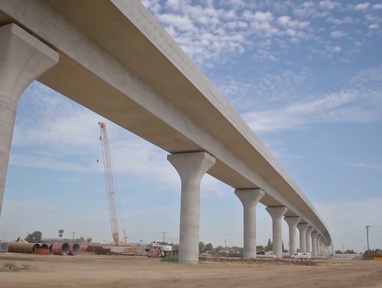State Budget Woes

In March 2021, Congress passed the American Rescue Plan. The $1.9 trillion bill included over $300 billion in assistance to state and local governments. Lawmakers hoped the subsidies would help states, counties, and cities manage the COVID-19 pandemic while hastening the economic recovery.
The subsidies were a welcome sight to many state and local officials, but even with the money these officials continue to face significant budget challenges that predate the pandemic.
What are these budget challenges and what can state lawmakers do to address them?
Don’t states have balanced-budget requirements?
The $1.9 trillion American Rescue Plan represents a relatively small share of federal government spending this year. As we explained in our Policy Insights edition on the US debt, a growing share of the spending is paid for by borrowing. In 2019 alone, the federal government’s annual budget deficit—how much spending exceeds revenue—was over $1 trillion.
While deficit spending has become the norm for the federal government, state governments don’t have quite as much flexibility to borrow. Nearly all states have a balanced-budget requirement that limits the amount lawmakers may borrow to pay for government spending. These rules exist to ensure states don’t force future taxpayers to pay for today’s spending.
The requirements don’t always work. A state may claim its budget is balanced while still incurring massive obligations that future state taxpayers will have to pay. In some states, there are loopholes that allow lawmakers to borrow money for particular purposes or take advantage of budget gimmicks. The biggest example is state pension obligations. In the video below, economist Josh Rauh explains that seemingly balanced budgets are often out of balance once we account for state pension obligations:
As Rauh explains, even if state lawmakers think they have balanced their budgets, they are likely underfunding their future pension obligations. The result is that future taxpayers may be on the hook for trillions of dollars in pension obligations that are being promised to public servants today—the very problem that balanced-budget requirements aim to prevent.
Why are pensions underfunded?
State and local governments employ more than 15 million workers. The budget costs related to paying their salaries, health insurance, and other benefits are significant. Among the benefits many of these public servants receive are promises of generous pensions. In many cases, governments promise their workers a defined-benefit pension plan that will give them a guaranteed monthly payment—often equal to a share of their pre-retirement salaries—during their retirement. These defined-benefit plans pose a growing risk to taxpayers.
State governments must set aside enough money to cover each worker’s future pension. But how much money do they need to contribute? Many state governments assume they can contribute relatively little to their pension funds and then grow these funds by investing them in stocks and other assets. The problem is that states assume high rates of return that come with significant risks. Josh Rauh explains what is happening in his 2017 study Hidden Debts, Hidden Deficits:
What is in fact going on is that the governments are borrowing from workers and promising to repay that debt when they retire, but the accounting standards allow the bulk of this debt to go unreported through the assumption of high rates of return.
Rauh estimates that under more reasonable assumptions that avoid putting future taxpayers at risk, state and local governments have underfunded their pensions by over $4 trillion. In some states, such as California and Illinois, current pension assets are insufficient to cover even half of future liabilities.
You can learn more about the pension crisis in the PolicyEd series Pension Pursuit. The series explains how state and local pensions work and how overoptimistic assumptions could leave future taxpayers on the hook for trillions in pension payments:
What about spending in other parts of state budgets?
Public sector pensions aren’t the only line item in state budgets. States spend hundreds of dollars on Medicaid, K–12 education, public safety, infrastructure, and countless other government services. Ensuring adequate resources are devoted to each of these isn’t easy for state officials. In some states, the difficulty of these matters is compounded by poor decisions of policy makers.
California is a clear example. The state’s budget is increasingly dedicated to just three programs: the state’s education system, health and human services (e.g., Medicaid, state welfare assistance), and state prisons. Economist Lee Ohanian describes the consequences of California’s misplaced budget priorities:
There is an enormous disconnect between the value of state-provided goods and services taxpayers receive and how much is spent. By nearly every metric, Californians should be wondering where the money goes, because it is obvious that many priority public goods are not being supplied and this is imposing big costs on taxpayers, particularly on low-income households.
California’s poor budgeting is also evidenced by the billions the state spent on the California High-Speed Rail project. The project was premised on providing Californians with a high-speed train that would connect Los Angeles to San Francisco. But the program quickly suffered from significant cost overruns and failed to deliver on any of its grandiose policies. Economist Michael Boskin describes the project in this video:
California isn’t alone. Illinois’s budget issues, for example, have led to reductions in the state’s credit ratings. For two years the state went without a budget, ultimately leading to more borrowing and reductions in government services. In this 2017 interview, the Hoover Institution’s Peter Robinson discussed Illinois budget woes with the state’s then governor Bruce Rauner.
What about state tax policies?
States finance their spending through a range of taxes including sales taxes, income taxes, and property taxes. A handful of states, such as Texas and Florida, don’t tax income and instead rely heavily on property and sales taxes. Taxes are, of course, necessary to pay for essential government services, but not all taxes have the same economic effects. Some states tend to increase income tax rates on top earners when they face a budget shortfall. But these tax hikes come with significant economic downsides. As the video below explains, high marginal tax rates affect decisions to work, hire, and invest. They discourage the very behaviors that are key to economic opportunity and a vibrant economy.
Tax increases also encourage filers to find new tax-avoidance strategies. Filers may choose to delay realizing capital gain in order to delay paying taxes; others might move out of the state. The result is that tax increases don’t always raise as much money as expected.
For example, over the last decade, California raised its top tax rate to 13.3 percent—the highest in the nation. The tax increases were intended to fund new state education programs, but the actual revenue gains fell far short of expectations. Josh Rauh explains that the tax increases reduced economic activity, increased tax-avoidance strategies, and encouraged filers to leave the state. The result was that the tax hikes raised only 40 percent of the revenue that state officials had predicted.
You can learn more about the dangers of high state income tax rates in this video:
Conclusion
Why should we care about state budgets? Our welfare and prosperity are linked to key public services like public safety, education, and infrastructure. And healthy state budgets are an important ingredient in ensuring these services are adequately provided. We know these issues are important because we can see it in state migration data. When budgets are in disorder and tax rates rise as a consequence, individuals and businesses will naturally think about moving. Lee Ohanian describes the scene in California:
California businesses are leaving the state in droves. In just 2018 and 2019—economic boom years—765 commercial facilities left California. This exodus doesn’t count Charles Schwab’s announcement to leave San Francisco next year. Nor does it include the 13,000 estimated businesses to have left between 2009 and 2016.
As the video below explains, “To reverse this flow, states must prioritize economic policies that make it cheaper and easier to work and live.”
Citations and Further Reading
You can learn more about the state and local pension crisis by reading “Public Pensions” in Policy Insights.













